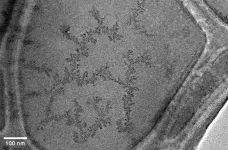March 26, 2025
We Are Vastly Overestimating the Amount of Fresh Water Available for Lithium Mining, New Study Finds
New research led by UMass Amherst hydrologists sounds the alarm over mining practices that have immediate implications for transition to low-carbon economy
AMHERST, Mass. — New research into lithium mining in the “Lithium Triangle” of Chile, Argentina and Bolivia — source of more than half of the world’s lithium resources — shows that the commonly accepted models used to estimate water how much water is available for lithium extraction and what the environmental effects may be are off by more than an order of magnitude. The paper, published in Communications Earth and Environment, reveals that there is far less water available than previously thought. With demand for the mineral, which is critical for batteries powering the green transition, projected to increase 40-fold in the coming decades, the research suggests local communities, regulators and the lithium mining industry must quickly collaborate to bring their water usage within sustainable limits.
Lithium, says David Boutt, professor of geosciences at UMass Amherst the paper’s senior author, is a strange element. It’s the lightest of the metals, but it doesn’t like to be in a solid form. Lithium tends to occur in layers of volcanic ash, but it reacts quickly with water. When rain or snowmelt moves through the ash layers, lithium leaches into the groundwater, moving downhill until it settles in a flat basin where it remains in solution as a briny mix of water and lithium. Because this brine is very dense, it settles beneath pockets of fresh surface water, which lie on top of the lithium-rich fluid below, forming lagoons.
These lagoons often become havens for unique and fragile ecosystems and iconic species such as flamingos, and are crucial for local communities, including the indigenous peoples who have long called the Lithium Triangle home. Any use of freshwater runs the risk of disturbing both the ecological health of the region and the indigenous ways of life — and that’s where Boutt and his team, who have previously published on the age and lifecycle of water in the Triangle, come in.
“We looked at 28 different basins in the Lithium Triangle,” says lead-author Alexander Kirshen, who completed the study as a research assistant at UMass Amherst, “and we wanted to understand how scarce the fresh water is.”
This is not an easy task, because these basins are located in very high, extremely arid and relatively remote regions nestled within the Andes mountains. The Lithium Triangle is more than 160,000 miles square, and there are few sensors and monitoring stations with which to track factors like streamflow and precipitation.
“The climate and hydrology of the Lithium Triangle is very difficult to understand,” says Boutt, so scientists and engineers have relied on global water models to best estimate water availability and environmental impacts of lithium mining within the Triangle.
The two most commonly used global water models suggest that the freshwater flowing into the Lithium Triangle’s basins is approximately 90 and 230 mm per year. “But after an initial assessment,” says Kirshen, “we suspected it was going to be too inaccurate for our purposes.”
So the team built its own model, called the Lithium Closed Basin Water Availability model, or LiCBWA — and what they found was a sharp divergence from the conventional understanding.
“There’s not much new freshwater at all coming into these systems,” says Boutt. While global models estimate an average of 90 and 230 mm per year of inflow, LiCBWA estimates from 2 to 33 mm, depending on the particular basin, with an average of just 11 mm per year for the 28 basins in their study. “The conventional wisdom is overestimating the amount of water by at least an order of magnitude,” says Boutt, “and we found that all but one of the 28 basins in our study should be classified as ‘critically water scarce,’ even without incorporating current, to say nothing of future, demands on the water supply.”
At the same time, the processes for mining lithium are changing. The older method, called evaporative concentration, is being supplanted by direct lithium extraction (DLE) — and 56% of the DLE sites in the Triangle use more water than the older, evaporative process. Nearly one third of the DLE facilities (31%) used 10 times more water than evaporative concentration.
“Because lithium mining is a reality in the Lithium Triangle,” the authors conclude, “scientists, local communities, regulators and producers must collaborate to reduce water use,” as well as commit to better monitoring precipitation, streamflow and groundwater levels for an even more precise hydrological picture.
Researchers from the University of Alaska Fairbanks, University of Alaska Anchorage and the University of Dayton contributed to this study, and funding was provided by BMW Group and BASF.
A full media kit, including a dozen photos and all caption and credit information, is available here.
About the University of Massachusetts Amherst
The flagship of the commonwealth, the University of Massachusetts Amherst is a nationally ranked public land-grant research university that seeks to expand educational access, fuel innovation and creativity and share and use its knowledge for the common good. Founded in 1863, UMass Amherst sits on nearly 1,450-acres in scenic Western Massachusetts and boasts state-of-the-art facilities for teaching, research, scholarship and creative activity. The institution advances a diverse, equitable, and inclusive community where everyone feels connected and valued—and thrives, and offers a full range of undergraduate, graduate and professional degrees across 10 schools and colleges and 100 undergraduate majors.
Contacts: David Boutt, dboutt@umass.edu
Daegan Miller, drmiller@umass.edu
END







